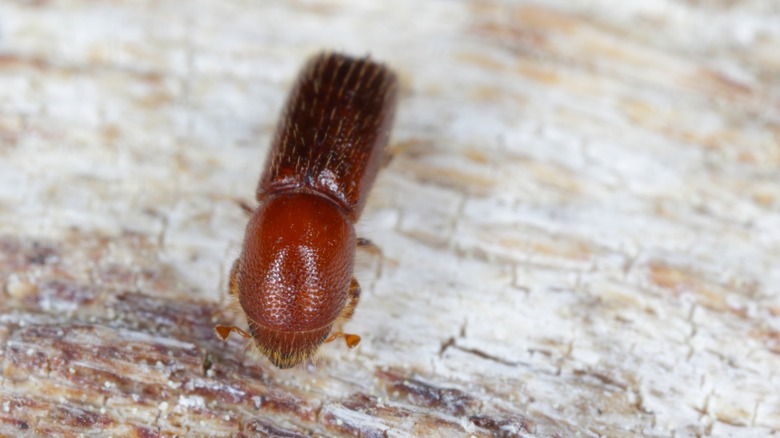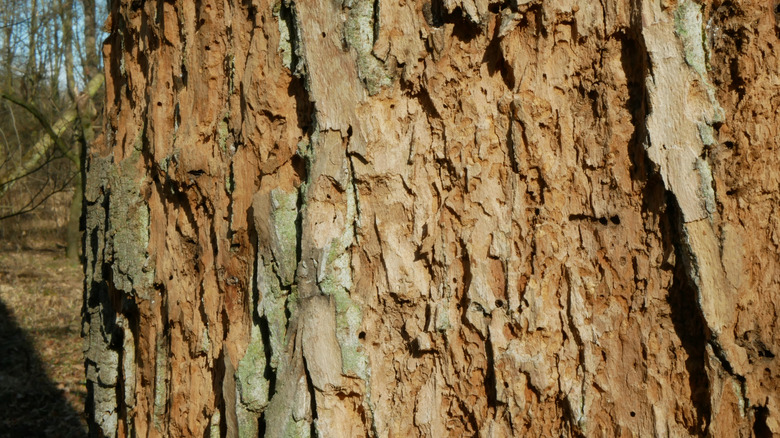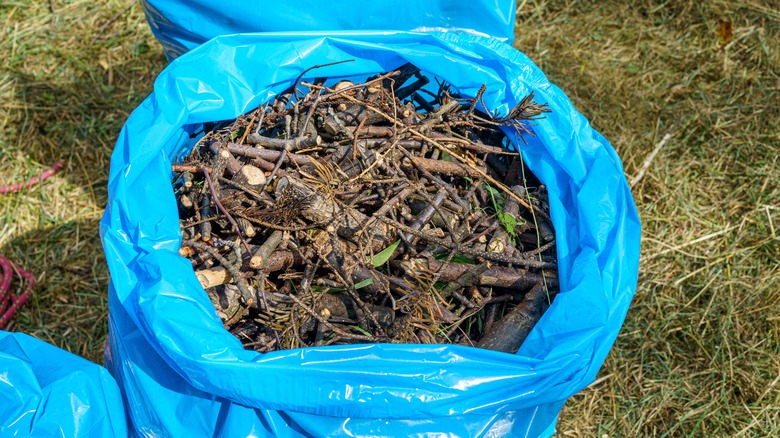How To Spot Mediterranean Oak Borer Damage On Your Trees
Mediterranean oak borers (Xyleborus monographs), also called ambrosia beetles, are a relatively new problem in the U.S. They're native to parts of Europe but were first seen in California as early as 2017. They're also considered rare in England, having been spotted there for the first time in 2015. They bore holes in trees and deposit fungal spores that severely damage and kill trees. In Europe, they're found predominantly on beech and oak trees, but they may develop new tendencies as they invade new territories. As it stands, they tend to prefer already stressed oak trees in the U.S. Their damage will likely be spotted before the tiny beetles themselves.
These ambrosia beetles are only 1/16th of an inch wide, making them incredibly difficult to spot with the naked eye. They can easily be transported to new areas via the wood they bored into, and the females can fly. Eradicating them when you notice their damage is important to help control this new invasive pest.
Damage starts at the top
Not only are these small beetles tough to spot, but they make it harder to notice an infestation by starting their damage on the ends of tree branches up high in the canopy. If left unchecked, they'll work their way down the tree, eventually damaging the trunk. Because of this behavioral pattern, you can determine how bad an infestation is based on how much of the tree is damaged. Mediterranean oak borer damage begins with wilting leaves, which can be another reason why they're so tough to spot. Trees wilt for many reasons, such as disease, other pests, environmental stressors, or injury. Knowing how healthy or unhealthy your tree is and keeping up with weather conditions will help you figure out what's up when a tree starts to lose leaves.
Mediterranean oak borer damage will cause the tree to drop wilting leaves once the leaves die. If left untreated, the branches will become discolored and may break off. The damage is believed to be caused by the fungi the beetles introduce to the tree. However, large populations of beetles can do plenty of damage to a tree on their own, thanks to their tunneling habits. Even if it's the fungi causing the most problems, the beetles and fungi should be treated as the same problem since one doesn't exist without the other. The beetles bring the fungi to the tree, and the fungi feed the beetles.
Eradication research is still underway
Many of today's pest control efforts are founded on years of research and trial and error. Unfortunately, we don't yet have that much historical knowledge about Mediterranean oak borers since they were first seen in the U.S. in 2017. Their full potential as an invasive species is not yet known -– it is unclear how quickly they will spread. They do appear to be a problem for oak trees, even if they're only damaging trees that are already suffering from problems that cause weakened wood.
Because the future of these ambrosia beetles isn't yet known, getting rid of them is crucial to help mitigate the spread of this invasive species. According to the California Department of Food and Agriculture, any sighting of these beetles should be reported to your local agricultural office. Avoid transporting wood to new areas to prevent the spread of the pest. Cut the wood into small pieces that are just a few inches in diameter, and enclose them in a plastic bag. Leave the wood in the bag for six weeks in the summer or six months in the winter. This process will keep the bugs contained and eventually kill them and the fungi. Don't forget that female beetles can fly, so burning the wood isn't a guarantee that the pest will be eradicated.



